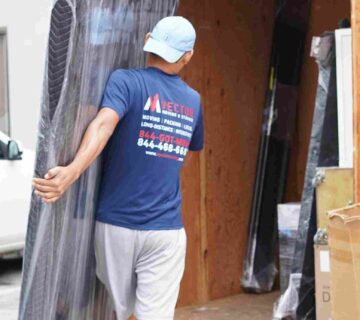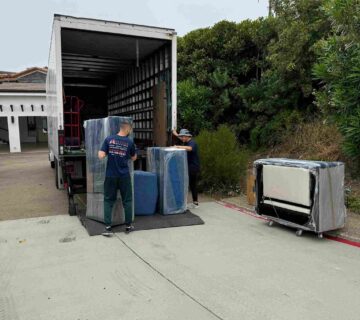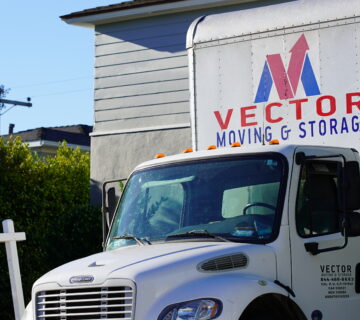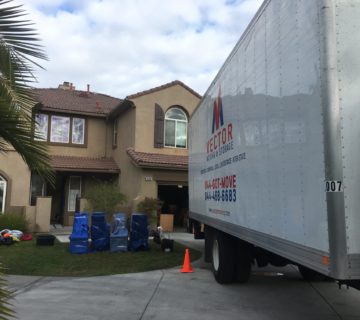The Ultimate Guide to Packing for Long Distance Moving with Ease
Moving to a new home, especially across long distances, can be both exciting and overwhelming. At Vector Moving and Storage San Diego, one of the best local moving companies, we understand the challenges that come with long-distance relocations. One of the most critical aspects of any move is packing. Proper packing can make a significant difference in ensuring that your belongings arrive safely and efficiently at your new destination. In this guide, we’ll share expert tips and strategies to help you pack for your long-distance move with ease.
1. Start Early
One of the most common mistakes people make when preparing for a long-distance move is waiting until the last minute to start packing. To alleviate stress and ensure you have enough time to pack everything properly, start the process as early as possible. Ideally, begin packing at least four to six weeks before your moving date. This will give you ample time to sort through your belongings, gather packing supplies, and pack methodically.
Tips:
– Create a moving timeline to keep yourself organized.
– Set aside time each day or week dedicated to packing.
– Prioritize rooms based on how frequently you use them.
2. Gather Quality Packing Supplies
Having the right packing supplies is essential for protecting your belongings during transit. Invest in high-quality materials to ensure that your items are safe and secure. Here’s a list of essential packing supplies you’ll need:
Essential Packing Supplies:
– Boxes: Get various sizes, including small, medium, and large boxes. Specialty boxes for items like dishes and wardrobe boxes are also helpful.
– Packing tape: Choose strong, durable tape that can hold heavy boxes together.
– Bubble wrap: Ideal for wrapping fragile items like glassware and electronics.
– Packing paper: Useful for wrapping items and filling empty spaces in boxes.
– Markers: For labeling boxes clearly.
– Furniture blankets: To protect large furniture pieces during transit.
Tips:
– Visit local stores or moving supply companies for boxes and packing materials.
– Consider using recycled materials, such as old newspapers or towels, for extra cushioning.
3. Declutter Before Packing
Long-distance moves provide the perfect opportunity to declutter your home. Before you start packing, go through each room and decide which items you want to keep, donate, sell, or discard. Not only will this make packing easier, but it will also save you money on moving costs since you won’t be transporting unnecessary items.
Tips for Decluttering:
– Use the “Four-Box Method”: Label four boxes as “Keep,” “Donate,” “Sell,” and “Trash.” As you go through your belongings, place each item in the appropriate box.
– Host a garage sale or use online platforms to sell items you no longer need.
– Donate gently used items to local charities or shelters.
4. Pack Room by Room
To stay organized during the packing process, tackle one room at a time. This method prevents chaos and helps you keep track of what has been packed and what still needs attention. Start with rooms that are used less frequently, such as guest bedrooms or storage areas.
Steps to Pack Room by Room:
1. Clear the space: Remove any clutter from the room before you start packing.
2. Sort items: Decide which items you want to keep and which ones you will get rid of.
3. Pack systematically: Begin with non-essential items (books, decor) and work your way to essentials (clothes, kitchenware).
4. Label boxes: Clearly label each box with its contents and the room it belongs to.
Tips:
– Use color-coded labels for different rooms to make unloading easier.
– Keep a detailed inventory list of what’s in each box for reference.
5. Protect Fragile Items
When packing fragile items, extra care is needed to prevent damage during transit. Here are some tips for packing fragile belongings safely:
Packing Tips for Fragile Items:
– Wrap individually: Wrap each fragile item in bubble wrap or packing paper before placing it in a box.
– Use dividers: For glassware or dishes, use cardboard dividers to separate items within the box.
– Fill empty spaces: Use packing peanuts or crumpled paper to fill any gaps in the box, preventing movement during transport.
– Label as fragile: Clearly mark boxes containing fragile items so movers handle them with care.
Tips:
– Consider using dish packs specifically designed for fragile kitchenware.
– Avoid overpacking boxes; heavy boxes are more likely to break.
6. Pack Clothing Efficiently
Clothing can take up a lot of space in boxes if not packed efficiently. Here are some strategies to pack your clothing effectively:
Clothing Packing Strategies:
– Use wardrobe boxes: These tall boxes come with a hanging rod, allowing you to transfer clothes directly from your closet without folding.
– Roll clothes: Rolling clothes instead of folding them can save space and reduce wrinkles.
– Use vacuum-sealed bags: These bags compress clothing, saving space and protecting against moisture and dust.
– Pack seasonal clothing separately: If you’re moving during a specific season, pack off-season clothing first.
Tips:
– Consider packing an essentials bag with clothing you’ll need immediately after arriving at your new home.
– Don’t forget about shoes; pack them in their original boxes or use shoe bags.
7. Organize Important Documents
When moving long distances, it’s crucial to keep important documents organized and easily accessible. Create a designated folder or binder for essential paperwork, including:
Important Documents to Keep Handy:
– Passports and identification
– Medical records
– Financial documents (bank statements, tax returns)
– School records (for children)
– Rental agreements or home purchase documents
Tips:
– Keep this folder with you during the move rather than packing it in the moving truck.
– Consider making digital copies of important documents for extra security.
8. Prepare Appliances for Moving
If you’re taking appliances with you, proper preparation is essential to ensure they arrive safely at your new home. Here’s how to prepare common appliances:
Appliance Preparation Steps:
– Refrigerators: Empty and clean the fridge at least 24 hours before moving day. Disconnect it from power and secure shelves inside with tape.
– Washing machines: Drain all water from hoses and secure them properly. Check your user manual for specific instructions on moving.
– Dryers: Clean the lint trap and disconnect the venting system carefully.
Tips:
– Measure doorways and hallways to ensure appliances fit through easily during the move.
– Consider hiring professionals if you’re unsure about moving large appliances.
9. Plan for Your Pets
If you have pets, planning for their needs during the move is essential. Moving can be stressful for animals, so take steps to ensure their comfort and safety.
Tips for Moving with Pets:
– Create a pet-friendly space: Set up a designated area for your pets away from the chaos of packing.
– Keep essentials handy: Pack a bag with food, water bowls, leashes, toys, and any medications your pet may need during the transition.
– Consider their routine: Try to maintain your pet’s routine as much as possible leading up to the move.
Additional Tips:
– If possible, arrange for a friend or family member to watch your pets on moving day.
– Ensure your pets are secured in a safe area during loading and unloading.
10. Communicate with Your Moving Company
As one of the best local moving companies in San Diego, Vector Moving and Storage is here to assist you throughout your long-distance move. Effective communication with your movers is vital for a successful relocation.
Tips for Communication:
– Provide clear details about your current home layout and any special considerations (e.g., narrow hallways).
– Discuss any items that require special handling or extra care.
– Confirm arrival times and any necessary logistics ahead of time.
Additional Considerations:
– Keep contact information handy for your movers on moving day.
– Don’t hesitate to ask questions or express concerns during the process.
11. Unpacking Strategies
Once you arrive at your new home, unpacking can feel just as overwhelming as packing. To make this process smoother:
Unpacking Strategies:
1. Start with essentials: Unpack essential items first—kitchenware, toiletries, bedding—so you can settle in quickly.
2. Follow your room labels: Unpack boxes according to their labeled rooms to stay organized.
3. Take breaks: Unpacking can be exhausting; take breaks as needed to avoid burnout.
Tips:
– Enlist friends or family members to help with unpacking if possible.
– Consider hosting a housewarming party once you’re settled in!
Conclusion
Packing for a long-distance move doesn’t have to be an overwhelming task. With careful planning and organization, you can streamline the process and ensure that your belongings arrive safely at your new home. At Vector Moving and Storage San Diego, we are committed to providing exceptional service throughout your moving experience. By following these tips and strategies, you can pack with ease and confidence, making your long-distance move a positive experience.
If you’re ready to start planning your move or need assistance along the way, don’t hesitate to reach out to us for expert support!






No comment